ANIMALS
30 Most Interesting Mutualistic Relationships In Nature
Published
10 months agoon
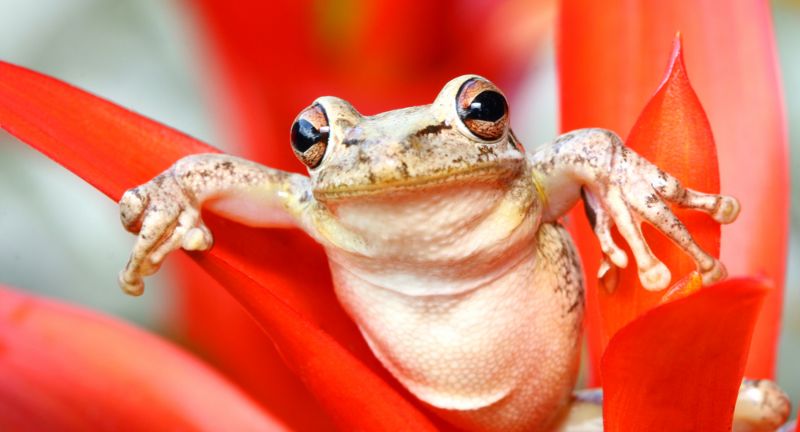
Shutterstock
Mutualistic relationships in nature represent some of the most fascinating interactions between species, where both parties gain significant benefits essential for their survival. These relationships can be found across all ecosystems, showcasing the incredible adaptability and interconnectedness of life. From the ocean depths with clownfish and sea anemones to the African savannas with oxpeckers and large mammals, these partnerships demonstrate nature’s ingenuity. Such interactions not only help maintain the health of the individual species involved but also contribute to the overall stability of their ecosystems. Exploring these relationships provides profound insights into the complexity of biological systems and the delicate balance of life on Earth.
Clownfish and Sea Anemones

Shutterstock
Clownfish and sea anemones showcase one of the most iconic mutualistic relationships in the marine world. The clownfish, through a mucus layer on its skin, is protected from the stings of the anemone’s tentacles, allowing it to swim freely among them. This arrangement provides the clownfish with protection from predators, while the anemone benefits from the removal of parasites and increased water circulation around its tentacles. The clownfish also fend off potential anemone predators and provide the nutrients from their excrement, which helps feed the anemone.
Oxpeckers and Large Mammals

Shutterstock
Oxpeckers, often seen riding on rhinos or buffalos, engage in a mutualistic relationship where both species benefit. The birds feed on ticks, blood-sucking flies, and other parasites that they find on the skin of these large mammals. Not only does this provide the birds with a constant food source, but it also helps keep the mammals free from parasites that can cause disease and discomfort. In addition, oxpeckers are known to raise alarm calls when they detect danger, helping to alert their hosts to potential threats.
Bees and Flowers

Shutterstock
Bees and flowers engage in a crucial mutualistic relationship that is essential for the reproduction of flowering plants. Bees collect nectar and pollen from flowers, which they use to feed their colonies; during these visits, bees become coated with pollen. When they move from flower to flower, they inadvertently transfer pollen, effectively fertilizing the plants and enabling them to produce seeds. This relationship not only sustains the bee populations by providing them with essential nutrients but also supports the biodiversity of the ecosystem through successful plant reproduction.
Goby Fish and Pistol Shrimp

Shutterstock
The goby fish and pistol shrimp share a remarkable mutualistic bond where both species benefit directly from the other’s presence. The shrimp digs and maintains a burrow in the sand that both animals use as a home. The goby fish, having better eyesight, stands guard and alerts the shrimp to danger with a flick of its tail. In return, the shrimp provides the goby with a safe haven from predators, creating a shared living space that protects both creatures.
Coral and Zooxanthellae

Shutterstock
Coral and zooxanthellae algae engage in a symbiotic relationship that is vital to coral reef ecosystems. The zooxanthellae live within the coral’s tissues, providing it with oxygen and organic products of photosynthesis, which are crucial for the coral’s survival. In return, the coral provides the algae with a protected environment and the compounds necessary for photosynthesis. This relationship not only allows coral to thrive in nutrient-poor tropical waters but also contributes to the complex structure and nutrient cycling that support the diverse organisms living on coral reefs.
Humans and Domesticated Animals

Shutterstock
Humans and domesticated animals such as dogs and cats have formed mutualistic relationships that date back thousands of years. Humans provide these animals with food, shelter, and care, ensuring their well-being and safety. In return, these animals offer their owners companionship and loyalty, and in many cases, physical labor or protective services. This relationship has evolved over millennia and remains deeply ingrained in human culture and society, demonstrating a powerful bond between species.
Fungi and Algae (Lichens)

Shutterstock
Lichens represent a complex mutualistic relationship between fungi and algae, where both organisms benefit significantly from their association. The algae perform photosynthesis, producing food that nourishes not only themselves but also the fungi. In return, the fungi provide a structure that protects the algae from harsh environmental conditions, effectively shielding them from harmful UV rays and extreme temperatures. This unique partnership allows lichens to inhabit some of the most inhospitable environments on Earth, from arctic tundras to rocky deserts, where few other organisms can survive.
Ants and Aphids

Shutterstock
Ants and aphids share a mutualistic relationship where both species benefit from the other’s existence. Aphids produce a sweet, sticky substance known as honeydew, which ants consume as a major food source. In exchange, ants protect aphids from predators and parasites, often herding them like cattle to maximize honeydew production. This protection allows aphid populations to thrive, ensuring a stable food supply for their ant protectors.
Fig Trees and Fig Wasps

Shutterstock
Fig trees and fig wasps depend on each other for reproduction in a tightly knit mutualistic relationship. The fig tree provides the wasp with a place to lay its eggs, inside the fruit itself. In return, as the wasps move from one fig flower to another, they pollinate the flowers, ensuring the continuation of the fig tree’s lifecycle. This intricate relationship is essential for the survival of both species, highlighting the complexity and interdependence found in nature.
Yucca Plants and Yucca Moths

Shutterstock
Yucca plants and yucca moths engage in a unique mutualistic relationship that is essential for the reproduction of both organisms. The yucca moth pollinates the yucca plant while depositing her eggs in the flower, where the developing larvae will later feed on some of the plant’s seeds. This arrangement ensures that the moths have a reliable food source for their offspring, while the plant benefits from pollination. The balance of this relationship ensures that enough seeds survive to propagate future generations of yucca plants, demonstrating a fine-tuned evolutionary partnership.
Acacia Trees and Acacia Ants

Shutterstock
Acacia trees and acacia ants form a defensive mutualism where both parties benefit from the other’s presence. The acacia tree provides nectar and hollow thorns, which serve as natural shelters for the ants. In return, the ants protect the acacia from herbivores by aggressively attacking anything that tries to eat the leaves, and they may even destroy competing plants growing nearby. This protective service helps ensure the tree’s survival and reproductive success, highlighting an effective natural defense strategy.
Sloths and Algae

Shutterstock
Sloths and algae engage in a fascinating mutualistic relationship that benefits both organisms. The algae grow on the fur of sloths, providing them with camouflage that helps protect them from predators. In return, the algae receive a moist, nutrient-rich environment to thrive on, which is supplemented by the minerals from the sloth’s skin. This relationship not only aids the survival of the sloth by providing camouflage but also nourishes the algae, making it a perfect example of mutualism in the animal kingdom.
Bats and Agave Plants

Shutterstock
Bats and agave plants have a mutualistic relationship where both species benefit from each other’s existence. Bats feed on the nectar produced by agave plants, which is their main source of nourishment during certain times of the year. While feeding, bats pollinate the agave’s flowers, ensuring the continuation of the plant’s lifecycle. This relationship is crucial for the production of agave-based products like tequila, as agave plants rely on bats for effective pollination.
Sea Turtles and Remora Fish

Shutterstock
Sea turtles and remora fish participate in a commensal relationship that often appears mutualistic, with benefits primarily seen by the remoras. Remora fish attach themselves to sea turtles using a special suction disk on their heads, which allows them to hitch a ride and conserve energy. While attached, remoras eat parasites and leftover food scraps from the turtle’s shell and skin, helping to keep the turtle clean. Although the primary benefit is to the remora, the cleaning can also aid in the turtle’s health, making this interaction beneficial for both parties.
Termites and Protozoa

Shutterstock
Termites and protozoa exhibit a classic example of mutualism in which both organisms benefit significantly. Protozoa live in the guts of termites, helping them digest cellulose, the main component of wood, which termites cannot break down on their own. This digestion process provides termites with the necessary nutrients to survive, while protozoa gain a secure habitat and constant food supply. Without this symbiotic relationship, termites would not be able to access the vast energy stored in wood, highlighting the crucial nature of their mutualistic bond.
Crocodiles and Egyptian Plover Birds

Shutterstock
The relationship between crocodiles and Egyptian plover birds is an intriguing example of mutualism, often dubbed the “crocodile and the plover.” In this relationship, the plover bird acts as a “dentist,” pecking away meat scraps stuck in the crocodile’s teeth. This not only provides the bird with a nutritious meal but also helps the crocodile maintain dental hygiene, potentially preventing infection. Although rare and somewhat mythologized, this interaction highlights the complex ways in which different species can benefit from each other’s presence.
Wolves and Ravens

Shutterstock
Wolves and ravens have a unique relationship where both creatures benefit from each other’s hunting skills. Ravens are often seen following wolves, ready to scavenge from the remains of the prey that wolves take down. This not only provides ravens with a reliable food source but also helps wolves in that the ravens serve as lookouts, alerting them to dangers and the presence of other animals. Though not directly cooperative, this relationship shows how two very different species can indirectly assist each other through their natural behaviors.
Sharks and Pilot Fish

Shutterstock
Sharks and pilot fish engage in a mutualistic relationship where both species gain significant benefits. Pilot fish follow sharks closely, eating leftover scraps of food and parasites from the shark’s skin and mouth. This keeps the shark clean and healthy, while the pilot fish receive nourishment and protection in the shark’s presence. The pilot fish are so adept at staying close to their hosts that they can even enter a shark’s mouth to clean away debris without being harmed.
Manatees and Fish

Shutterstock
Manatees and various species of fish exhibit a mutualistic relationship where each gains benefits. Small fish, including juveniles of many species, graze on the algae and parasites found on the skin of manatees, thereby gaining a meal. For the manatee, this grooming helps maintain their skin’s health and prevents disease. This interaction not only helps sustain fish populations by providing a source of food but also keeps manatee populations healthy, showcasing an essential ecological connection between species.
Buffalos and Egrets

Shutterstock
Buffalos and egrets benefit from a classic example of a mutualistic relationship seen across many grazing ecosystems. Egrets follow closely as buffalos graze, catching insects and small creatures that fly up from the grass. This interaction provides the egret with a reliable source of food and the buffalo relief from pestering insects. The presence of egrets is also beneficial as they alert buffalos to potential predators lurking nearby, enhancing the safety of the herd.
Tree Frogs and Bromeliads

Shutterstock
Tree frogs and bromeliads exhibit a mutualistic relationship crucial for the reproductive success of both species. Bromeliads collect water in their leaf bases, creating pools that provide habitat for tree frog eggs and tadpoles. The tadpoles, in turn, contribute nutrients to the bromeliad through their waste, which helps fertilize the plant. This symbiotic relationship allows tree frogs to thrive in rainforest ecosystems where water bodies are not always available, illustrating the interdependence of species within these complex habitats.
Mongooses and Warthogs

Shutterstock
Mongooses and warthogs in Africa form a mutualistic relationship where both parties benefit from grooming sessions. Mongooses are often observed climbing onto warthogs to pick off ticks and other parasites that they eat. This grooming helps keep the warthogs healthy and free from parasites, while the mongooses receive a nutritious meal. The warthogs seem to appreciate the cleaning service, often seeking out mongooses for their grooming skills, showcasing a unique inter-species interaction.
Moray Eels and Cleaner Wrasses

Shutterstock
Moray eels and cleaner wrasses participate in a mutualistic interaction that is beneficial to both species. Cleaner wrasses swim into the open mouths of moray eels to remove and eat parasites and food debris. This not only provides the wrasses with a meal but also helps keep the eels healthy by preventing infections that might be caused by the buildup of parasites and debris. This relationship demonstrates the trust and cooperation that can develop between predator and prey species in the marine environment.
Spider Crabs and Algae

Shutterstock
Spider crabs and algae have a mutualistic relationship beneficial for both organisms. Algae grow on the crab’s shell, providing it with effective camouflage against predators. In return, the algae benefit from being able to move with the crab to different areas, which exposes them to varying light conditions necessary for photosynthesis. This camouflage not only helps the crabs avoid predators but also allows the algae to colonize new areas, showcasing the dynamic interplay between mobility and survival strategies in marine ecosystems.
Burdock Plant and Animals with Fur

Shutterstock
The burdock plant has seeds that are specifically adapted to catch on the fur of passing animals, an example of mutualistic dispersal. This mechanism ensures that burdock plants can spread their seeds over wide areas, far beyond where they originally grew. Animals with fur benefit from burdock plants as these environments often provide food and shelter, making them attractive habitats. While the primary advantage is to the plant for seed dispersal, animals often use these areas for protection or nesting, showcasing a mutual benefit in ecosystem dynamics.
Elephants and Birds

Shutterstock
Elephants and various bird species exhibit a mutualistic relationship that is beneficial for both groups. Birds, such as oxpeckers, feed on parasites that they pick off from the elephant’s skin, which helps keep the elephants healthy and free from irritants. In return, the birds gain a nutritious meal and a mobile platform from which they can look out for potential predators. This inter-species interaction highlights the benefits of cooperation in nature and the intricate ways different animals can support each other’s survival.
Spotted Hyenas and Honey Badgers

Shutterstock
Spotted hyenas often follow honey badgers to capitalize on their exceptional ability to break into tough beehives. The hyenas then feed on the leftovers, primarily honey and bee larvae, after the honey badger has had its fill. This relationship benefits the hyenas by providing them with access to a food source they would have difficulty accessing on their own. Meanwhile, the honey badger benefits from the hyena’s ability to deter other potential competitors that might be attracted by the commotion of breaking into hives.
Drongos and Meerkats

Shutterstock
Drongos and meerkats in the Kalahari Desert share a complex relationship where drongos act as both guardians and tricksters. Drongos use their mimicking abilities to imitate the alarm calls of meerkats to scare them away from a meal, which the drongo then steals. Despite this deceptive tactic, drongos also genuinely alert meerkats to the presence of predators at times, providing a crucial warning service. This dual role showcases the intricate balance of cooperation and competition in animal relationships, where the line between mutualism and exploitation can be fine.
Leopard Sharks and Horseshoe Crabs

Shutterstock
Leopard sharks and horseshoe crabs engage in a cleaning symbiosis that is mutually beneficial. Horseshoe crabs feed on parasites and dead skin off the leopard sharks, helping to keep the sharks healthy and free from infections that could be caused by these irritants. In return, horseshoe crabs receive a steady diet and protection while they are busy cleaning. This relationship highlights how different marine species can interact in ways that improve their chances of survival and health.
Green Turtles and Cleaner Fish

Shutterstock
Green turtles benefit from their relationship with cleaner fish, which include species like wrasses and surgeonfish. These small fish eat algae and parasites from the turtle’s skin and shell, which helps maintain the turtle’s overall health and mobility by preventing disease and facilitating easier swimming. In return, cleaner fish receive a substantial and reliable source of food. This cleaning behavior is crucial for the health of marine turtles and highlights the role of mutualistic relationships in maintaining the health of marine ecosystems.
Conclusion

Shutterstock
The exploration of mutualistic relationships highlights the incredible complexity and interdependence of life forms on Earth. These symbiotic interactions, where both participants benefit, underscore the intricate balance and adaptability of ecosystems. They remind us of the beauty of natural cooperation and the evolutionary advantages it can confer on species. Such relationships not only ensure the survival and health of individual species but also enhance biodiversity and ecological stability. Recognizing and understanding these relationships is crucial for conservation efforts, as preserving these interactions helps maintain the health of the entire ecosystem.
More Amazing Animals+
-
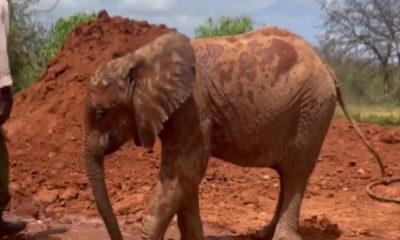

Rokka’s trunk might not yet be big enough to properly…
-
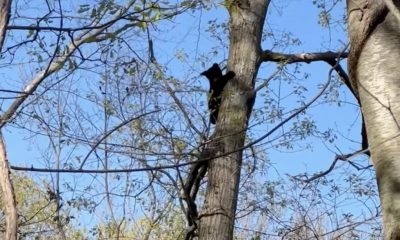

Orphaned bear cubs playing in tree after mother bear, Bobbi,…
-
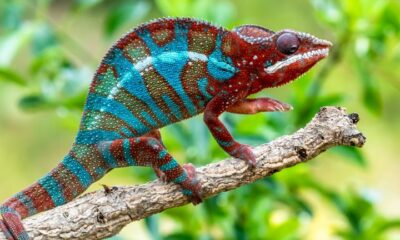

15 Wildest Animals In The Everglades
-


More – Alligator arrest outside of a school in Charleston,…
-


‘Horrifying’ Dog Meat Trade Overseas Motivated Beauty Blogger To Start…
-


Danish Royal Life Guards escort duck family to Copenhagen harbor
-


Elk making a break for the trees.
-
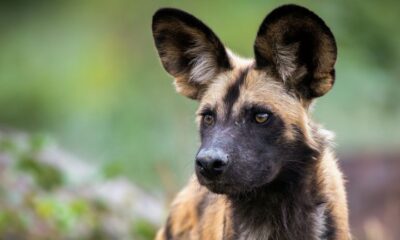

21 Animals That Are Considered Stone Cold Killers
-
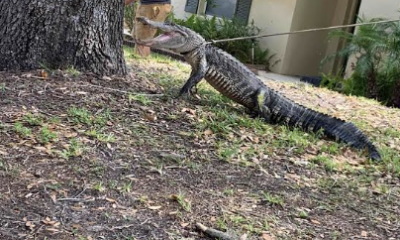

An Alligator Causing Havoc In Florida Woman’s Yard is Finally…
-
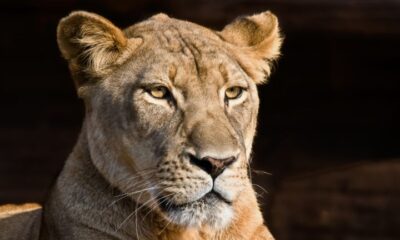

Why Lionesses Are the True Rulers of the Animal Kingdom
-
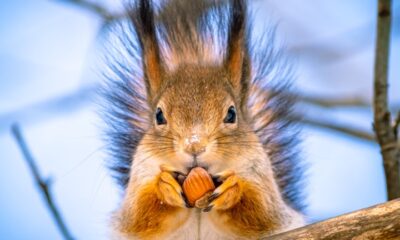

We Promise This Animal Is Not As Annoying As You…
-
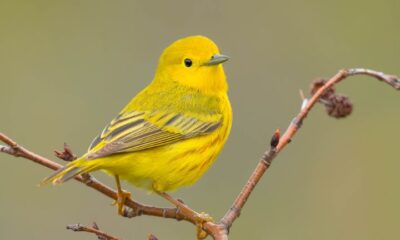

25 Birds That Migrate For Winter
